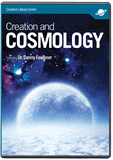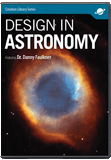
Big Bang Cosmology Challenged by Dust and a Massive Black Hole
Abstract
A very distant galaxy shows evidence of much dust, while a quasar nearly the same distance contains the most massive black hole ever detected. In a big bang cosmology, we are viewing these two objects from a very early epoch in the universe. There is not enough time in the current understanding of cosmic evolution for either of these objects to exist. Hence, these observations present tremendous problems for the standard cosmology.
According to the big bang model, the universe began as a very hot, dense gas 13.8 billion years ago. As the universe expanded and cooled, atoms eventually formed, from which stars and galaxies gradually condensed. Since the big bang universe would begin with only hydrogen and helium (and a tiny amount of lithium), the first stars consisted only of those light elements. It took a few generations of stars deriving their energy by nuclear fusion of the lighter elements into heavier ones to produce the elements that we are more familiar with, such as carbon, oxygen, silicon, and iron. Once galaxies formed, matter collected in their cores to form very massive black holes. The production of the heavier elements in large quantity and the formation of supermassive black holes would take time, probably a few billion years.
These ideas have been challenged by two recent studies. The first study, published in late February, concerns the hyperluminous quasar SDSS J010013.02+280225.8.1 From its high redshift, astronomers compute that this quasar is 12.8 billion light years away. That is, we supposedly are seeing SDSS J010013.02+280225.8 as it existed only one billion years after the big bang. If this distance is correct, then SDSS J010013.02+280225.8 is 40,000 times brighter than our Milky Way galaxy (the Milky Way is very bright, containing a few hundred billion stars).2 More fascinating is that this quasar has at its core a black hole that is 12 billion times more massive than the sun. This is the most massive black hole known. According to the standard explanation of cosmological evolution, it would take some time for stars to form after the big bang. It would take longer for galaxies to form, and it would take even longer for the black holes at the centers of most galaxies to form. It would have taken far more than a billion years after the big bang for a black hole this large to form, so how can astronomers explain this black hole in the big bang cosmology?
The second study concerns the galaxy A1689-zD1, discovered only in 2008.3 Its discovery was facilitated by the fact that it lies behind the galaxy cluster Abell 1689, with the cluster’s mass acting as a gravitational lens that increases the brightness of A1689-zD1 nearly tenfold. From their redshifts, astronomers have determined that the cluster is 2.2 billion light years away, but A1689-zD1 is a staggering 13 billion light years away. This means that we are supposedly seeing A1689-zD1 as it was only 800 million years after the big bang. At the time of its discovery, A1689-zD1 was the earliest observed galaxy. A study published in early March 2015 has found that A1689-zD1 contains nearly as much dust as our own Milky Way galaxy does.4 Dust does not contain hydrogen or helium, but rather dust primarily consists of carbon, silicon, oxygen, and iron, elements that should not exist in an early big bang universe. Astronomers explain the dust content of the mature Milky Way by 12 billion years’ worth of processing of matter by stars, but 800 million years is not nearly enough time to produce sufficient heavier elements required to account for the dust that we see in A1689-zD1.
These two recent studies are an embarrassment for the big bang model, so will this lead to the big bang’s downfall?
These two recent studies are an embarrassment for the big bang model, so will this lead to the big bang’s downfall? Hardly. The big bang has had numerous challenges in the past, such as the flatness problem and the horizon problem. Each problem has been explained away by a change in the big bang model that amounts to a rescuing device. For instance, cosmic inflation explains away the flatness problem and the horizon problem, though there is no evidence for inflation. I expect that once again the big bang model will be altered to fit the new data. As I’ve mentioned before, this is reminiscent of the Ptolemaic model. The Ptolemaic model was altered countless times to conform to any discrepancies with data. At the time, most people thought that this was a good thing. However, any theory that can be modified to fit any new data is no theory at all. For an idea to be a theory it must be possible to disprove the idea, at least hypothetically. If that is not possible, then the idea is dogma, not theory. Just as the Ptolemaic model eventually was abandoned because all the ad hoc additions made it very complicated, we can hope that one day people will abandon the big bang model. But this will not happen as long as there is no other palatable model. Of course, the idea that “In the beginning God created the heavens and the earth” is not considered a viable option to most people, because they reject the authority of Scripture.
Footnotes
- Xue-Bing Wu et al., “An Ultraluminous Quasar with a Twelve-Billion-Solar-Mass Black Hole at Redshift 6.30,” Nature 518 (February 26, 2015): 512–515, doi:10.1038/nature14241.
- Sky and Telescope also recognizes this as a problem. See Camille M. Carlisle, “Monster Black Hole in Early Universe,” Sky and Telescope, February 26, 2015, http://www.skyandtelescope.com/astronomy-news/monster-black-hole-in-early-universe-0226201523/.
- ESO notes that it was unexpected to find something this dusty in an early universe. See “An Old-looking Galaxy in a Young Universe,” ESO, March 2, 2015, http://www.eso.org/public/usa/news/eso1508/.
- Darach Watson et al., “A Dusty, Normal Galaxy in the Epoch of Reionization,” Nature (2015), doi10.1038/nature14164.
Recommended Resources

Answers in Genesis is an apologetics ministry, dedicated to helping Christians defend their faith and proclaim the good news of Jesus Christ.
- Customer Service 800.778.3390
- © 2024 Answers in Genesis





